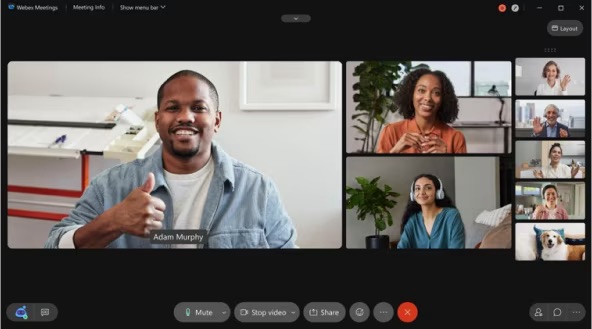This report endeavors to address the issue regarding the ineffectiveness of weekly sync up meetings in both the professional and educational settings. Current solutions do not provide the organization needed to maintain understanding of meeting goals as well as productive distribution of information to all occupants. This report hopes to provide a different solution that could be more effective.

In the contemporary organizational landscape, virtual meetings have become the cornerstone of communication strategies. However, a prevalent issue undermining their effectiveness is the prevalence of lengthy meetings lacking clear expectations and purpose. This report aims to address this problem by implementing strategies to streamline virtual meetings, thereby enhancing collaboration and productivity.
During COVID, the need for weekly sync meetings increased exponentially and now, even a couple years later, we still maintain that increased need. Employees needed a way to meet up with other employees, team members, and managers. Students needed a way to meet professors, and work with their peers. However, there is little to no organization in a lot of these meetings. We’ve all sat through meetings where the main presenter drones on and on and eventually we just mute our mic and wait for the end. Then there are the meetings where no one is prepared, no one is on the same page because there was no distribution of material or sharing of important points that needed to be discussed.
There are many benefits of course to weekly sync meetings. One is the reduction of emails. Sync meetings provide answers in a timely fashion whereas emails can result in delayed responses to time sensitive issues. They are also a great way to divide tasks among the group regarding projects. Another benefit is team building and boosting camaraderie. Teams tend to work more cohesively when they are regularly around their peers. We get to know people, see their work methods, and compare/combine it with our own.

When handled properly weekly meetings can be brief. It’s the inability to be organized and succinct that can create the long and boring experience most of us are familiar with. From the beginning, meeting goals and tasks should be shared among members, so everyone is on the same page. A schedule of topics as well as the order in which they are being discussed, would also help maintain organization so no one is confused.
What weekly sync meetings need is a dedicated tool to help facilitate them. One tool that can be used across platforms to organize data as well as communicate relevant information to those attending the meeting. Our recommended solution is Otter.ai, an AI based application that uses an AI assistant to integrate among video applications such as Zoom, Microsoft Teams, and Google Meet as well as other applications such as Slack and Google Docs, both of which are incredibly useful in regard to sharing notes and documents among peers.
With this application users can prepare and prioritize by creating clear agendas to share with all meeting members. Agendas can also be automated for weekly purposes on Zoom or Google meet. Otter.ai can also be used to send messages through Slack to participants asking whether anything should be added to the agenda or not. Calendars can be synced with Microsoft outlook to include meeting reminders and Otter.ai also offers a mobile application for those who also keep informed outside of work/school hours. All of these amenities can be accessed through this one site which can help maintain organization throughout the meeting, allowing them to be more productive.

Regarding cost, Otter.ai begins with a basic package for free that can satisfy aspects of weekly meetings depending on a group’s needs. However, should more options be required, it does offer other pro packages per user for a cost, and even a business package for companies. The pro package equates to $9.17/month per user and the business package is $20/month per user. Otter.ai also allows for prospective users to schedule a demo so they can see and experience first hand what the application has to offer as well as how it is all brought together with the AI assistant. While the cost for the paid programs may seem a lot, the cost of time and work lost due to ineffective meetings may be more.


